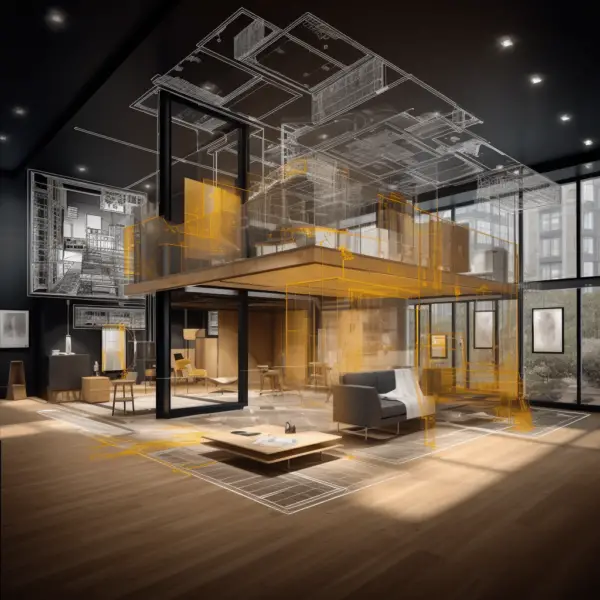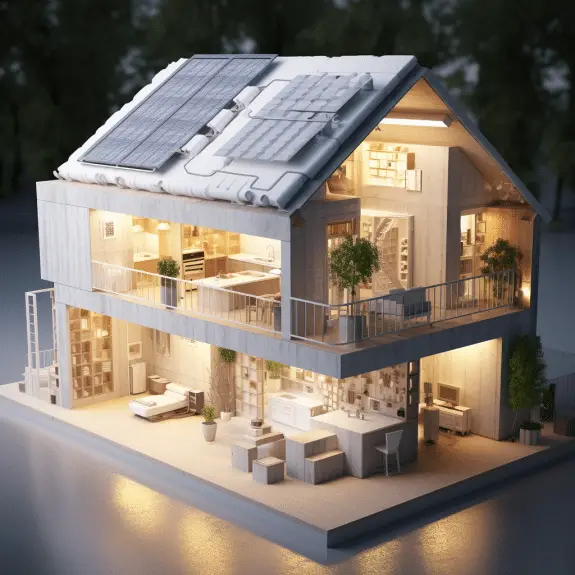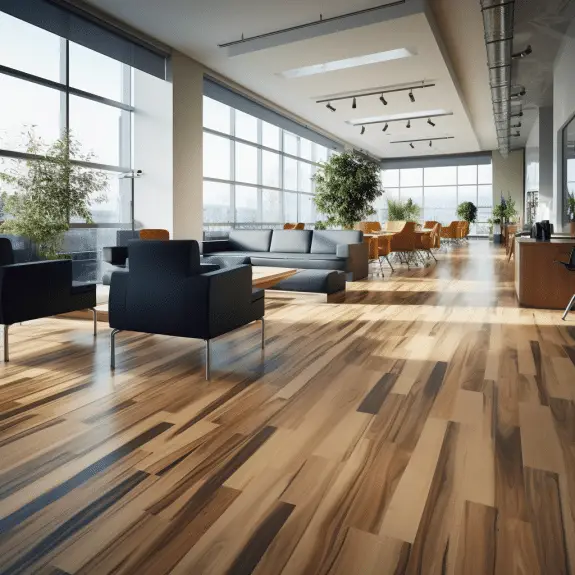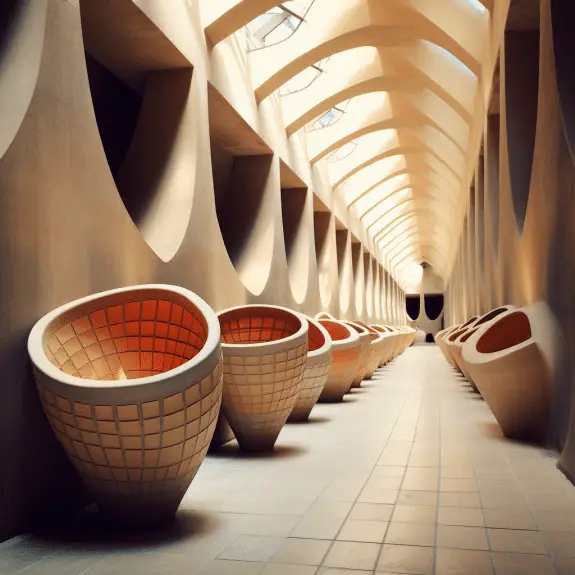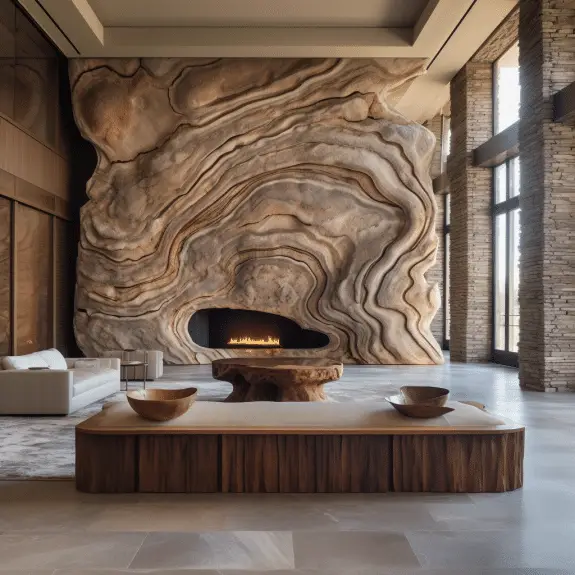Enhancing Construction and Learning with Visual Aesthetics
When it comes to constructing a space, aesthetics play a crucial role in creating an environment that is visually appealing and inviting. The choice of building materials can greatly influence the overall aesthetic quality of a design. From the exterior facade to the interior finishes, every aspect contributes to the beauty and elegance of a space.
In this article, I will explore the importance of visual aesthetics in construction and home design. We will delve into the impact of visually pleasing building materials, the value of aesthetics in instructional design, and how to incorporate visual aesthetics into home design. Whether you are an architect, interior designer, or homeowner, understanding the significance of aesthetics will help you create spaces that are not only functional but also beautiful.
Key Takeaways:
- Choosing visually pleasing building materials enhances the aesthetic appeal of a space.
- Visual aesthetics in instructional design leads to heightened engagement and motivation in learning.
- Incorporating visual aesthetics in home design creates a visually pleasing and inviting atmosphere.
- Paying attention to small details in home design elevates the overall aesthetic appeal.
- Curated art and decor add a personal touch and create focal points in a space.
Understanding the Value of Aesthetics in Instructional Design
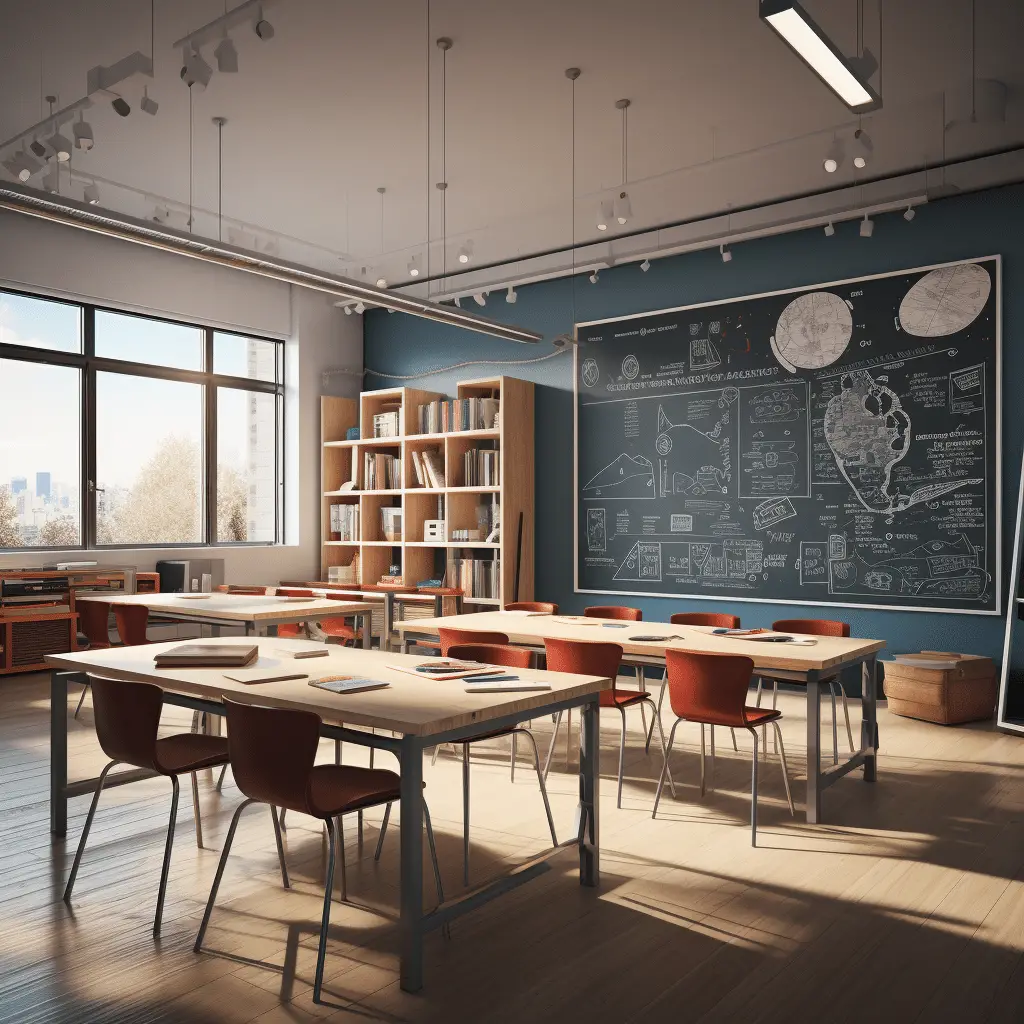
Visual aesthetics help instructional designers connect the product to the user’s emotions and feelings, improving learning. Instructional design aesthetics boost learner engagement. Visually appealing materials attract students and encourage active learning. Visuals attract, engage, and motivate students, making learning more pleasurable and effective.
Additionally, instructional design aesthetics can improve learning. Visually appealing surroundings can improve learners’ moods and attitudes toward learning materials. Positive emotions can boost motivation, creativity, and memory, improving learning.
In conclusion, instructional design aesthetics are crucial. Visual aesthetics help instructional designers create interesting and effective learning experiences that capture learners’ attention and strengthen their emotional connection to the subject.
The Impact of Visual Aesthetics on Affective Aspects of Learning
Visual aesthetics play a crucial role in the emotional response to a learning experience.Visually appealing instructional materials attract attention, interest, and motivation, increasing learner engagement. The appearance of materials creates a positive and attractive environment, making learning more pleasurable and successful.
Aesthetically pleasing visuals can evoke various emotions that contribute to a more immersive learning experience. Colors, shapes, and design elements can elicit positive emotional responses, such as excitement, curiosity, and inspiration. These emotions enhance the overall affective aspects of learning by creating a positive association between the learner and the content. As a result, learners are more likely to stay engaged, retain information, and apply their knowledge effectively.
“The visual appeal of instructional materials can capture attention, generate interest, and enhance motivation, leading to increased engagement in the learning process.”
Furthermore, visuals can create a sense of connection and relevance to the learner’s personal experiences and interests. When instructional materials incorporate relatable images, realistic scenarios, or relatable characters, learners can easily identify with the content and form meaningful connections. This emotional connection fosters a deeper engagement with the material and promotes a sense of ownership and personal investment in the learning process.
In summary, the impact of visual aesthetics on affective aspects of learning cannot be understated. By designing instructional materials that are visually appealing, educators and instructional designers can foster emotional responses that enhance engagement, motivation, and overall learning outcomes. Incorporating well-crafted visuals creates a positive and meaningful learning environment that captures learners’ attention, sparks their curiosity, and leaves a lasting impression.
The Impact of Visual Aesthetics on Cognitive Aspects of Learning
In the realm of instructional design, the role of visual aesthetics extends beyond the realm of emotion and engagement. Quality visual design has a profound impact on the cognitive aspects of learning, influencing how information is processed, retained, and creatively utilized. By leveraging the power of visual aesthetics, educators and instructional designers can optimize the learning experience.
Enhancing Cognitive Processing
Visual aesthetics have the ability to enhance cognitive processing, facilitating the acquisition and understanding of information. When instructional materials are visually appealing, they attract attention and stimulate curiosity. This heightened engagement promotes active cognitive processing, enabling learners to make connections, analyze information, and generate meaningful insights.
Aiding Information Retention
The visual appeal of instructional materials plays a crucial role in information retention. When information is presented in a visually pleasing and organized manner, it is easier for learners to encode and store it in memory. Well-designed visuals, such as diagrams, infographics, and charts, can improve the effectiveness of information retention by supporting the formation of mental associations and facilitating recall.
Fostering Creativity
Visual aesthetics also have the power to foster creativity in the learning process. When learners are exposed to visually stimulating materials, it stimulates their imagination and encourages them to think outside the box. By incorporating diverse visuals, colors, and artistic elements into instructional design, educators can inspire learners to explore new perspectives, generate innovative ideas, and unleash their creative potential.
| Benefits of Visual Aesthetics on Cognitive Aspects of Learning |
|---|
| Enhances cognitive processing |
| Aids information retention |
| Fosters creativity |
Incorporating Visual Aesthetics in Home Design
When it comes to designing a home, incorporating visual aesthetics is crucial in creating an atmosphere that is not only aesthetically pleasing but also inviting and comfortable. By carefully considering the elements of a harmonious color scheme and thoughtful lighting, homeowners can transform their living spaces into visually stunning havens.
A Harmonious Color Scheme
A harmonious color scheme sets the foundation for a visually pleasing home design. By selecting colors that complement each other and evoke a desired mood, homeowners can create a cohesive and inviting environment. For example, a soothing palette of soft blues and greens can promote relaxation in a bedroom, while warm earth tones can create a cozy and welcoming atmosphere in a living room.
Thoughtful Lighting Choices
Lighting plays a crucial role in enhancing the visual appeal of a home. Thoughtfully placed lighting fixtures can highlight architectural features, illuminate focal points, and create a warm ambiance. Natural light should also be considered, as it can bring a sense of openness and freshness to any space. Combining different layers of lighting, such as ambient, task, and accent lighting, can add depth and dimension to the overall design.
| Benefits of Incorporating Visual Aesthetics in Home Design | |
|---|---|
| 1. Aesthetic appeal: | Create a visually pleasing and inviting atmosphere in your home. |
| 2. Mood enhancement: | Choose colors and lighting that uplift your mood and promote relaxation. |
| 3. Reflect personal style: | Use visual aesthetics to express your unique personality and taste. |
| 4. Increased resale value: | A visually appealing home design can attract potential buyers and increase the value of your property. |
Home design goes beyond decoration to include visual aesthetics. It’s about establishing an emotional and enriching living space. A balanced color scheme, smart lighting, and other design aspects may help homeowners create homes that are not only beautiful but also represent their personal style and give comfort and well-being.
Paying Attention to Detail in Home Design
When it comes to creating a visually appealing home design, attention to detail is key. Every small element contributes to the overall aesthetic appeal, and one area where this is particularly important is in the selection of cabinet hardware and decorative accents.
Cabinet hardware plays a significant role in the visual impact of a space. By choosing cohesive styles that complement the overall design theme, you can elevate the look and feel of your cabinets. Consider the finish, shape, and size of the hardware to ensure a harmonious and cohesive appearance. Whether you prefer sleek and modern or ornate and traditional, the right cabinet hardware can make a world of difference.
Decorative accents are another essential aspect of home design. These small details can add personality, texture, and visual interest to a space. From decorative pillows and throws to vases and sculptures, the choices are endless. Select pieces that align with your design aesthetic and create focal points within the room. By paying attention to these decorative elements, you can enhance the overall visual appeal of your home.
Examples of Attention to Detail in Home Design
“Every detail matters in home design, no matter how small it may seem. The right cabinet hardware and decorative accents can transform a space and create a cohesive, visually stunning environment.” – Interior Designer
To illustrate the importance of attention to detail, here is an example of how it can be applied in home design:
| Element | Attention to Detail |
|---|---|
| Cabinet Hardware | Choosing brushed bronze hardware with a geometric design for modern kitchen cabinets, creating a sleek and cohesive look. |
| Decorative Accents | Adding a statement mirror with a unique frame as a focal point in the living room, enhancing the visual appeal of the space. |
| Light Fixtures | Opting for pendant lights with hand-blown glass shades in a dining area, adding a touch of elegance and creating a warm ambiance. |
Material Selection for Visual Appeal
When it comes to creating a visually appealing living space, material selection plays a crucial role. Choosing the right materials can add visual interest and enhance the overall aesthetic appeal of a home. One material that stands out for its natural beauty and timeless charm is natural wood.
Natural wood adds warmth and charm to any environment. Adding natural wood components like hardwood floors, wooden furniture, or exposed beams can give a sense of closeness and connection with nature. Its natural wood grain and color variations offer depth and character, making it suitable for modern and traditional design.
Along with natural wood, other visually appealing materials can enhance a home’s aesthetics. Stone accents provide elegance and class, while velvet or tweed add tactile elements. These materials can be intelligently mixed to create a pleasing living space.
Table: Examples of Visually Appealing Materials
| Material | Visual Appeal |
|---|---|
| Natural Wood | Warmth, character, natural variations |
| Textured Fabrics | Tactile element, visual interest |
| Stone | Elegance, sophistication |
| Glass | Transparency, modernity |
When selecting materials for visual appeal, it is important to consider the overall design concept and the desired mood of the space. Each material has its own unique visual characteristics, and choosing the right combination can create a cohesive and visually pleasing environment. By carefully considering material selection, homeowners can transform their living spaces into stunning showcases of aesthetic beauty.
Adding Curated Art and Decor for Personal Touch
When it comes to creating a visually appealing and inviting home design, adding curated art and decor is a key element. Curated art not only adds a personal touch to a space but also serves as a focal point, drawing attention and sparking conversation. By strategically placing decorative objects, you can enhance the overall aesthetic appeal of your home.
The Power of Curated Art
Curated art refers to carefully selected pieces that align with your personal style and the overall design theme of your home. Whether it’s a captivating painting, a unique sculpture, or a gallery wall displaying a collection of artwork, curated art can instantly elevate the visual appeal of any room. By choosing art that resonates with you, you create a sense of personal connection and infuse your space with your own unique identity.
Enhancing with Decorative Objects
In addition to curated art, incorporating decorative objects can further enhance the visual appeal of your home. Decorative objects such as vases, candles, or statement pieces can be strategically placed to create focal points and add visual interest to a room. These objects can also reflect your personal style and serve as conversation starters, making your home feel warm and inviting.
Strategic Placement for Maximum Impact
When adding curated art and decor, strategic placement is crucial. Consider the flow of the room and the natural eye-catching areas where artwork and decorative objects can make the most impact. For example, placing a large piece of artwork above a fireplace or showcasing a collection of decorative objects on a mantel can create a visually stunning focal point. Experiment with different arrangements and placements to find the perfect balance.
| Benefits of Adding Curated Art and Decor | Examples of Decorative Objects |
|---|---|
|
|
By adding curated art and carefully selected decorative objects, you can transform your home into a visually stunning and inviting space that reflects your personal style. Remember to choose pieces that resonate with you and strategically place them to create maximum impact. Let your creativity shine through as you curate your own art gallery within the walls of your home.
Using Visually Pleasing Building Materials
Choosing visually pleasing building materials is a crucial factor in enhancing the overall aesthetic appeal of any space. When it comes to construction and home design, the materials used significantly contribute to the visual impact and create a beautiful and sophisticated atmosphere.
One visually pleasing building material that adds elegance and charm to any space is natural stone. Whether it’s marble, granite, or travertine, these materials bring a timeless beauty that enhances the aesthetic appeal of both interior and exterior surfaces. Their unique patterns and textures create a sense of luxury and elevate the visual experience.
Another excellent choice is natural wood. Its warmth and natural grain patterns make it a popular option for flooring, cabinetry, and furniture. Using wood in home design adds character, a touch of nature, and enhances the overall visual interest of the space.
| Building Material | Advantages |
|---|---|
| Natural Stone | Timeless beauty, unique patterns, and textures |
| Natural Wood | Warmth, natural grain patterns, and visual interest |
| Diverse Soffit Materials | Versatility, varied textures, and modern appeal |
Additionally, incorporating diverse soffit materials can further enhance the aesthetic appeal of a building. From metal to composite materials, the use of different textures and finishes can create a modern and visually interesting facade. These materials provide versatility in design, allowing for unique and eye-catching architectural elements.
Using visually pleasing building materials not only adds beauty but also creates a lasting impression. It’s essential to carefully select materials that harmonize with the overall design scheme and complement each other. By doing so, you can achieve a cohesive and visually stunning result that transforms any space into a work of art.
Enhancing Aesthetic Visual Appeal in Home Transformation
When it comes to home transformation, enhancing the aesthetic visual appeal is a top priority. One of the key factors to consider is interior design. By carefully selecting the right colors, textures, and materials, homeowners can create a visually stunning space that reflects their personal style.
A crucial element in enhancing the aesthetic visual appeal is paying attention to detail. From cabinet hardware to decorative accents, every aspect contributes to the overall look and feel of the home. By choosing cohesive styles and carefully curating these small details, homeowners can elevate the visual appeal of their living space.
Attention to Detail in Home Design
Attention to detail extends beyond just the smaller elements. The choice of building materials also plays a significant role in enhancing aesthetic appeal. Incorporating visually pleasing materials such as natural wood and stone can add beauty and sophistication to any home design. Additionally, exploring diverse soffit materials can further enhance the visual interest and uniqueness of the space.
“Attention to detail is what separates ordinary spaces from extraordinary ones. It’s the small touches that make a big difference in the overall aesthetic visual appeal.” – Interior Design Expert
To truly transform a home, it’s important to have a holistic approach to interior design. Consideration should be given to factors such as lighting, color scheme, and the arrangement of furniture and decor. By harmoniously combining these elements, homeowners can create a visually appealing atmosphere that reflects their personal style and enhances the overall aesthetic visual appeal.
To summarize, enhancing the aesthetic visual appeal in home transformation requires attention to detail and a holistic approach to interior design. By carefully selecting materials, paying attention to small details, and considering factors such as lighting and color scheme, homeowners can transform their homes into visually stunning spaces that reflect their unique personality and style.
| Key Tips for Enhancing Aesthetic Visual Appeal |
|---|
| Pay attention to detail in home design, including small elements like cabinet hardware and decorative accents. |
| Incorporate visually pleasing materials such as natural wood and stone. |
| Explore diverse soffit materials to add visual interest. |
| Consider lighting, color scheme, and furniture arrangement to create a harmonious and visually appealing atmosphere. |
The Benefits of Aesthetic Visual Appeal in Home Design

Creating a visually appealing home design goes beyond mere aesthetics. It has numerous benefits that enhance not only the visual appeal but also the overall atmosphere and mood of a living space. Aesthetically pleasing homes create a sense of harmony and tranquility, making them inviting havens for homeowners and their guests.
The visual appeal of a well-designed home has a direct impact on mood enhancement. When a space is aesthetically pleasing, it promotes feelings of positivity, relaxation, and joy. Warm and vibrant colors, strategic use of lighting, and carefully curated decor can all contribute to creating an atmosphere that uplifts and energizes.
An inviting atmosphere is another significant benefit of aesthetic visual appeal in home design. Thoughtful attention to detail, such as the selection of comfortable furniture, inviting textures, and cozy lighting, can make a space feel warm and welcoming. The combination of these elements creates a sense of comfort and encourages people to gather, connect, and enjoy their surroundings.
Quotes:
“A visually appealing home design has the power to transform a house into a home, creating a space that truly resonates with the homeowner’s personality and style.” – Interior Design Expert
“By prioritizing aesthetic visual appeal in home design, homeowners can create a sanctuary that not only pleases the eye but also nourishes the soul.” – Home Decorating Magazine
List of Benefits:
- Enhanced mood and positive emotions
- Improved relaxation and well-being
- Increased comfort and coziness
- A welcoming and inviting atmosphere
- Reflection of the homeowner’s personality and style
Investing in the aesthetic visual appeal of home design is not just about creating a beautiful space. It is about improving the overall quality of life, creating a haven that promotes well-being, and reflecting the homeowner’s unique taste and personality. Whether it’s through carefully selecting materials, paying attention to every detail, or incorporating curated art and decor, a visually appealing home design offers endless benefits for both the residents and their guests.
| Benefits | Description |
|---|---|
| Enhanced mood and positive emotions | A visually appealing home design promotes feelings of joy, relaxation, and positivity, contributing to an improved mood. |
| Improved relaxation and well-being | Aesthetically pleasing environments create a sense of harmony and tranquility, allowing residents to unwind and rejuvenate. |
| Increased comfort and coziness | Thoughtful attention to detail, such as comfortable furniture and cozy lighting, enhances the overall comfort and coziness of a living space. |
| A welcoming and inviting atmosphere | The visual appeal of a well-designed space creates an inviting atmosphere that encourages connection, relaxation, and enjoyment. |
| Reflection of the homeowner’s personality and style | Aesthetically pleasing home designs allow homeowners to express their unique taste, personality, and style through their living space. |
Conclusion
The choice of visually pleasing building materials and the incorporation of visual aesthetics are essential in creating an aesthetic home design. By selecting materials that are visually appealing, such as natural wood and diverse soffit materials, homeowners can enhance the beauty and sophistication of their living spaces.
Additionally, paying attention to detail is crucial in achieving an aesthetically pleasing home design. From cohesive cabinet hardware to carefully selected decorative accents, every small detail contributes to the overall visual appeal of the space.
By following design principles and techniques, such as incorporating a harmonious color scheme and adding curated art and decor, homeowners can transform their homes into visually appealing havens that reflect their personal style.
In summary, by choosing visually pleasing building materials, paying attention to detail, and incorporating visual aesthetics, homeowners can create a stunning and aesthetically pleasing home design. A visually appealing home not only enhances the overall aesthetic appeal but also creates an inviting atmosphere and reflects the homeowner’s personality, resulting in a space that truly feels like a haven.
FAQ
What is instructional design?
Instructional design is the crossroads between the educational tradition (instructional) and the artistic tradition (design), focusing on creating effective and engaging learning experiences.
Why is aesthetics important in instructional design?
Aesthetics in instructional design bridge the gap between the product and the user’s emotion and feeling, leading to heightened engagement, motivation, and a positive learning experience.
How do visual aesthetics impact learning?
Visual aesthetics significantly influence a person’s emotional response to a learning experience, capturing attention, generating interest, and enhancing motivation, resulting in increased engagement in the learning process.
What role do visual aesthetics play in cognitive aspects of learning?
Quality visual design in instructional materials supports cognitive processing, aids retention of information, and fosters creativity in the learning experience.
How can visual aesthetics be incorporated in home design?
Visual aesthetics in home design can be achieved by incorporating a harmonious color scheme and thoughtful lighting to create a visually pleasing and inviting atmosphere.
What are some key details to pay attention to in home design?
It is important to pay attention to small details such as cohesive styles for cabinet hardware, switch plates, and decorative accents to elevate the visual appeal of a home.
How does material selection impact the visual appeal of a home?
Choosing a variety of visually pleasing materials, such as natural wood and textured fabrics, adds visual interest and depth to a living space.
How can curated art and decor enhance the visual appeal of a home?
Adding curated art and decor provides a personal touch and creates focal points, enhancing the overall visual appeal of a space.
What are the benefits of using visually pleasing building materials in home design?
Visually pleasing building materials, such as stone, natural wood, and diverse soffit materials, add beauty and sophistication to a home’s design.
How can homeowners transform their homes into visually appealing spaces?
By incorporating a harmonious color scheme, paying attention to detail, and using visually pleasing building materials, homeowners can transform their homes into aesthetically pleasing spaces that reflect their personal style.
What are the benefits of creating a visually appealing home design?
Creating a visually appealing home design enhances the aesthetic appeal, enhances mood, creates an inviting atmosphere, and reflects the homeowner’s personality.



